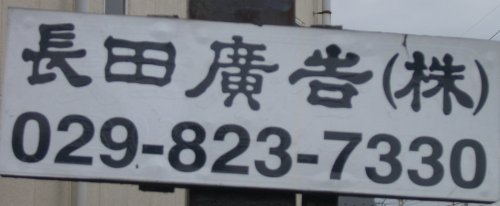
Some kanji, like 沢, have an alternative form like 澤. There are many reasons why these variations exist, including reforms of the written language, simplifications used in handwriting, and typographic differences.
 |
| 長田広告, with 廣 instead of 広 |
|---|
In the illustration on the right, the third kanji from left, 廣, is the old form of 広 in kōkoku (広告), advertisement. Kyūjitai (旧字体) refers to the older form of the kanji before the Tōyō kanji came into being. See What is the difference between Tōyō Kanji and Jōyō Kanji? Some of the old forms of the kanji are still in use, particularly in people's names. See How do Japanese names work?
Other terminology regarding variant characters includes:
Chinese characters have a long history and there are many different ways to write each of them. See Handwritten styles.
Copyright © 1994-2025 Ben Bullock
If you have questions, corrections, or comments, please contact Ben Bullock or use the discussion forum / Privacy policy

|

|

|

|

|
| Book reviews |
Convert Japanese numbers |
Handwritten kanji recognition |
Stroke order diagrams |
Convert Japanese units |